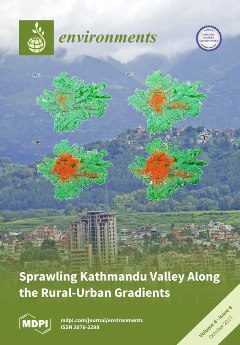Passive sampling for airborne volatile organic compounds (VOCs) has gained popularity; however, diffusive uptake rates (
URs) have been experimentally determined for only a small subset of VOCs. This study aims to develop empirical models that can interpolate effective
URs (
[...] Read more.
Passive sampling for airborne volatile organic compounds (VOCs) has gained popularity; however, diffusive uptake rates (
URs) have been experimentally determined for only a small subset of VOCs. This study aims to develop empirical models that can interpolate effective
URs (
UReff) for a wide range of VOCs. The modelling was based on the standard automated thermal desorption (ATD) tubes packed with Tenax TA and targeted the sampling efficiency (
α), defined as the ratio between the ideal
UR (
URideal) and
UReff. Available experimentally determined
URs were compiled from literature. Method detection limits were determined on a thermal desorption-gas chromatography/mass spectrometry (TD-GC/MS) system. The 8-h
UReff can be modeled with retention volumes or boiling points (
BPs) and the biases were within ±20%. The
α for 7-day
UReff can be estimated by the model:
α = 0.3626 Ln(
BP) − 1.2324. The 8-h and 7-day
UReff values were then compiled for 75 VOCs commonly encountered in the environmental and occupational settings. The TD analytical method showed high precision, linearity and sensitivity, suitable for measuring indoor and outdoor VOCs. The approach and data presented here are anticipated to ease passive monitoring of VOCs for the general users.
Full article





